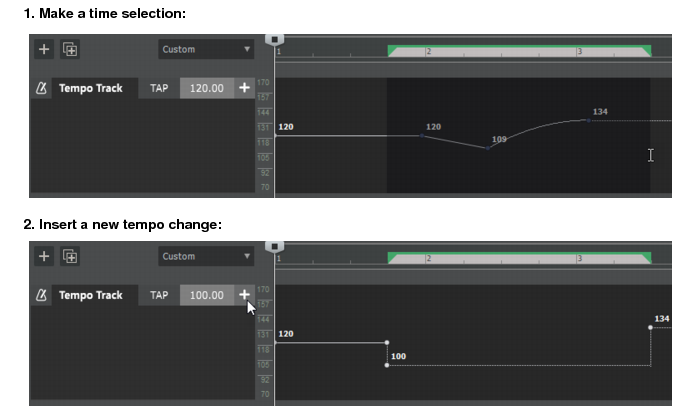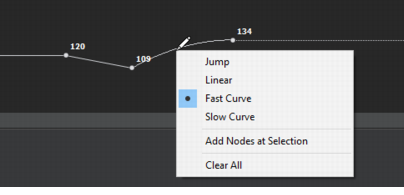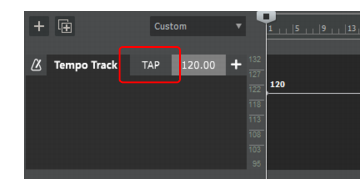Figure 109. Tempo track.You edit the project’s tempo map the same way you edit automation envelopes. For information on general automation envelope operations, see Creating and editing automation envelopes.If you make a mistake using any of these tools, you can use Edit > Undo to correct the error.The Control Bar contains several tools (see Tools) you can use to add or modify tempo changes:

, position the pointer over the envelope where you want to insert a new node, then click and drag the envelope node up/down to the desired BPM value, or left/right to the desired time position.

, make a time selection, then drag vertically from the top of the track to insert two nodes at the selection boundaries.
By default, tempo changes are inserted as envelope “jump” shapes. To change the curve type, right-click the envelope shape or click the rightmost column in the Tempo inspector. For details, see Adjusting the shape of a tempo change.


or Select tool
, drag in the Tempo track to select the tempo changes you want to copy.
, Move tool
, or Edit tool
.
To enter a specific tempo numerically, right-click the envelope node and select Properties to open the Edit Node dialog box, then specify the desired BPM value and time position.





, position the pointer within the selection near the top of the Tempo track until the mouse pointer looks like this
, then drag up/down.
or Move tool
, position the pointer near the top of the Tempo track, within the tempo change you want to raise/lower, then click to select the duration of the tempo change.
, hold down the CTRL key to momentarily invoke the Move tool
, then drag up/down.
in the Tempo track repeatedly to tap out a tempo.

, click a node or drag with the right mouse button to lasso select multiple nodes, then press the DELETE key or select Edit > Delete.





Tip - Searching Documentation
Tip: To search for a specific topic, type your search query in the Search Cakewalk.com field at the top right of this page.
When the search results appear, click which product's documentation you would like to search to filter the search results further.
Note - Using Offline Help
Note: If you prefer to always use offline Help, go to Edit > Preferences > File > Advanced in your Cakewalk software and select Always Use Offline Help.
If you are not connected to the internet, your Cakewalk software will default to showing offline help until an internet connection becomes available.











